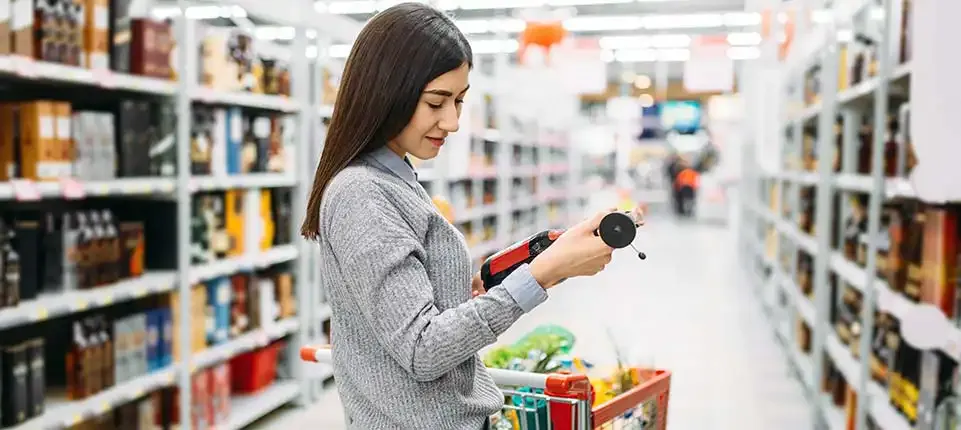August 12, 2022
Are zero alcohol drinks a healthier alternative?

You may have heard a lot of talk recently in the media or in your social circles about zero alcohol drinks.
Despite the increasing popularity of these products, we’re yet to fully understand how they fit into the lifestyles of people who already drink alcohol – and those who don’t drink.
We also don’t know how zero alcohol drinks might contribute to alcohol-related harms.1
While these products are being promoted as zero alcohol, it’s important to consider who’s creating them and why, and understand how they’re being marketed to the general public.
How are these zero alcohol drinks being marketed?
While drinking zero alcohol drinks may be a healthier substitute for people looking to reduce their alcohol consumption – the alcohol industry is not interested in promoting them for this purpose.
Heineken’s ad campaign for ‘Heineken 0.0’ uses the tag line: “That moment you couldn’t have a beer… now you can”. And, their ads show people drinking Heineken 0.0 while driving a car, preparing to drive a boat with a water-skiing friend, and during a work meeting.
Carlton uses a similar approach with their advertising campaign.2
Both these brands have made it clear they want people to consume their zero alcohol drinks in addition to their current alcohol consumption – and in situations where it’s not legal, safe or socially acceptable to drink alcohol.3, 4 Neither company is interested in positioning their products as a ‘healthier substitute’.1
This kind of marketing works for the alcohol industry because it encourages people to buy more of their products rather than replacing one with the other. In short, it increases their profits.
Why does this matter?
Zero alcohol products are virtually identical to alcohol products in branding and packaging.
So, if more people are drinking zero alcohol products– and in places where alcohol is illegal or not socially acceptable – it might create a misperception that alcohol is being drunk more frequently than it is and in risky situations.
Although adults are less likely to be influenced by this, children and young people might be more vulnerable as their social norms around alcohol use are still developing.5
Young people might also have difficulty telling the difference between products – and may see an adult having a zero alcohol drink in the car but not understand the difference. They may assume drinking while driving is a normal, acceptable behaviour.1
Zero alcohol drinks are also now being sold in supermarkets – giving young people an extra layer of alcohol brand exposure on top of the daily advertising they already see through billboards, posters, sporting club sponsorship and tv ads.
Marketing of these products has provided new opportunities for alcohol companies to display their branding and packaging to increase brand recognition and loyalty amongst young people.1
This might lead to more young people trying these products.
And, there’s risk involved in consuming a drink which looks, smells, and tastes like alcohol. If young people become accustomed to the taste and habit of having zero alcohol drinks, they could easily transition to drinking alcohol at an earlier age.1
So how can we prevent the possibility for harm from zero alcohol drinks?
If we’re talking from a regulation perspective, some reasonable strategies would include:
- not selling zero alcohol products to people under 18
- zero alcohol drinks only being sold in bottleshops, pubs, bars, etc and not in supermarkets
- not marketing zero alcohol products as something to drink in ‘addition’ to alcohol.
However, we know the industry is unlikely to support any initiative that undermines their profitability.
Industry aside, there are other steps the community can take to minimise harm.
- People looking to cut back on their alcohol use, should drink zero alcohol products as a substitute rather than additional beverage.
- People under 18 shouldn’t be encouraged to drink zero alcohol products.
- Parents and adults can role model responsible behaviours in front of children – for example, by not drinking zero alcohol products at times when they wouldn’t drink alcohol.
If you’re worried about yourself or somebody’s use of alcohol, there is support available:
National Alcohol and Other Drug Hotline: 1800 250 015
24-hour phone line that offers telephone counselling, information, support and referral to treatment services for anyone seeking help for their own, or another person's, alcohol or drug use.
Family Drug Help (VIC, SA, TAS): 1300 660 068
Family Drug Support (NSW, ACT, QLD): 1300 368 186
Parent and Family Drug Support Line (WA): 1800 653 203
Path2Help
Not sure what you are looking for?
Try our intuitive Path2Help tool and be matched with support information and services tailored to you.

- Miller M, Pettigrew S, Wright CJC.Zero-alcohol beverages: Harm-minimisation tool or gateway drink?Drug and Alcohol Review [Internet]. 2021 [07.07.2022]; 41(3).
- Heineken. Campaigns - That moment you couldn't have a beer. Now you can [14.04.2022].
- The ABAC Scheme Limited. ABAC Adjudication Panel Determination No 178/21. 2021. Available from: The Alcohol Beverages Advertising Code Scheme | Capital Brewing Hang Loose Juice NEIPA Packaging & Facebook Post (abac.org.au)
- The ABAC Scheme Limited. ABAC Adjudication Panel Determination No 207/20. 2021. Available from: The Alcohol Beverages Advertising Code Scheme | Carlton Zero YouTube Advertisement (abac.org.au)
- Voogt C, Smit K, Kleinjan M, Otten R, Scheffers T, Kuntsche E.From Age 4 to 8, Children Become Increasingly Aware About Normative Situations for Adults to Consume Alcohol. Alcohol and Alcoholism. 2019;55(1):104-11.


